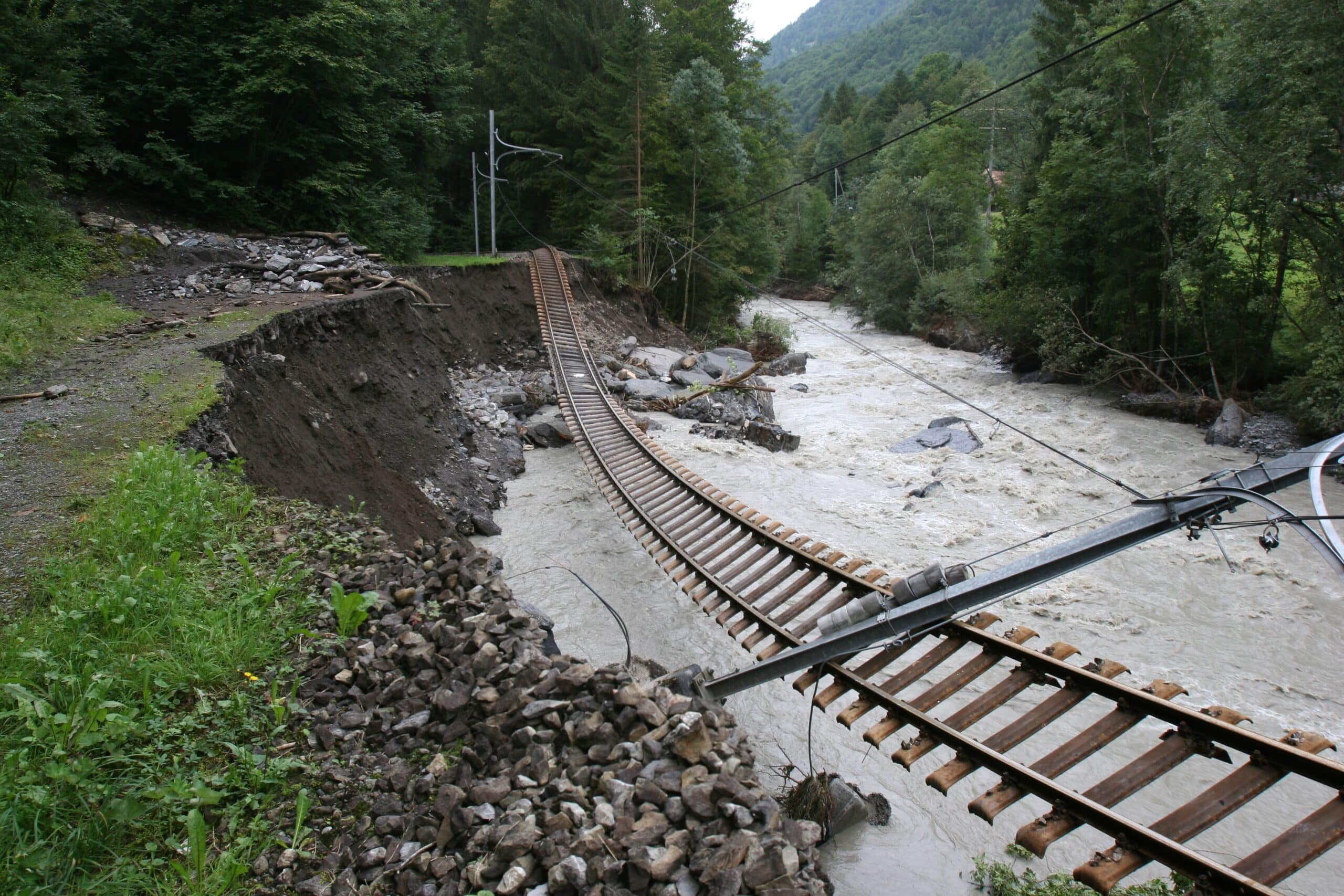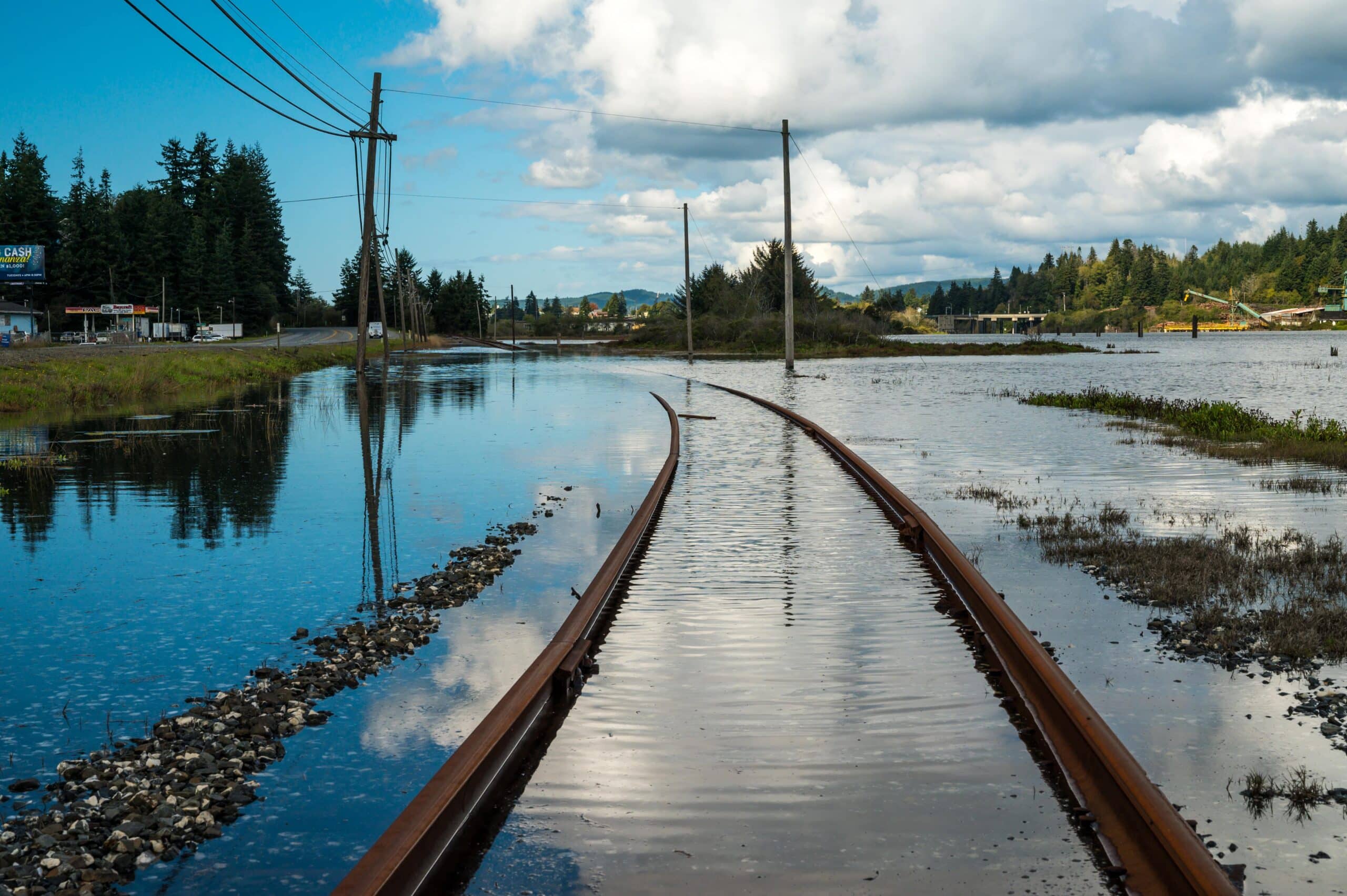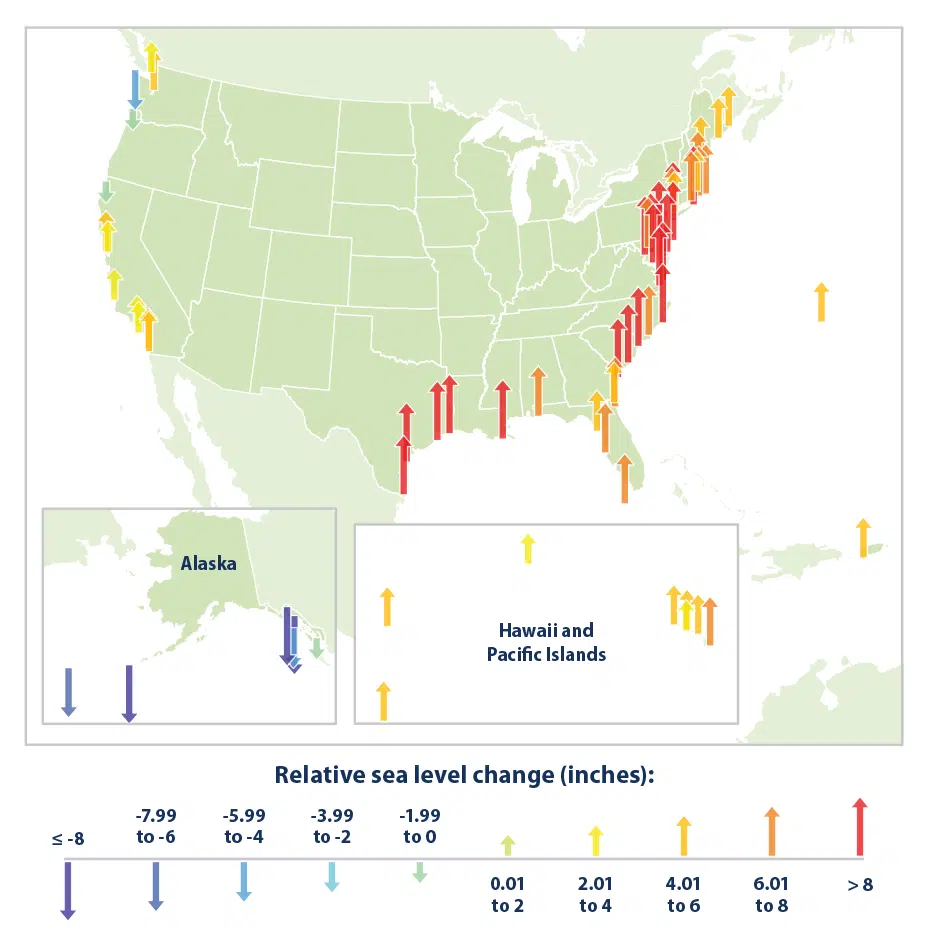- March 1, 2024
- Perspectives
Rail Resilience Strategies for Existing and New Corridors


Jill Gibson
Transit Practice Lead

Corey Hill
National Rail Practice Lead
Each year, US freight rail transports about 1.6 billion tons of raw materials and finished goods across nearly 140,000 miles of track. Those goods include about 1.6 million carloads of grain and other farm products and more than 1.7 million carloads of food products.
Freight rail transportation contributed $40 billion to the US gross domestic product in 2021. The most recent annual data is available from the US Department of Transportation’s Bureau of Transportation Statistics.
Passenger movement is equally essential to rail activity. Nearly 29 million passengers rode Amtrak in its fiscal year 2023 (October 2022–September 2023), up more than 24% from fiscal year 2022. Brightline also had more than two million passengers last year, up 67% from 2022.
Reliable rail service is essential to moving people, goods, and the economy. Furthermore, rail plays a critical role in the reduction of greenhouse gas emissions due to the efficiencies in passenger and freight rail transportation. Policy makers have demonstrated their support through unprecedented funding that bolsters historic intercity passenger routes and builds new corridors.
Because rail is playing an increasingly important role in the nation’s transportation network, existing corridors and thousands of miles of new tracks will need to be better protected and built to withstand natural disasters and other weather-related threats. Not only are environmental risks to today’s rail infrastructure higher than ever, but new considerations will impact how we engage with communities and stakeholders on the best approaches to protect existing infrastructure and design new infrastructure.
Extreme Climate Events Risk Rail Reliability
As with any type of infrastructure, rail is vulnerable to extreme climate events. They may be short and intense, like flash floods and thunderstorms. Others, like heat waves and wildfires, may last for extended periods. Both types are increasing, jeopardizing the safety of passengers, crew, and increasing the likelihood of damaged infrastructure.
The Environmental Protection Agency (EPA) showed that from the 1960s to the 2020s, heat waves have increased in frequency, duration, season length (the number of days between the first and last heat wave of the year), and intensity. The data cover 50 large metropolitan areas in the US. One important finding was that the frequency increased from an average of two to six heat waves per year.
Extreme precipitation causing flooding and washouts is also increasing. According to the EPA, “Nine of the top 10 years for extreme one-day precipitation events have occurred since 1996.”

Additionally, wildfires are burning more acres on average each year since the 1980s. The EPA wrote, “According to National Interagency Fire Center data, of the 10 years with the largest acreage burned, all have occurred since 2004.”
Sea level rise is especially problematic due to population centers on America’s coasts. EPA data show that, “Relative sea level rose along much of the US coastline between 1960 and 2021, particularly the Mid-Atlantic coast and parts of the Gulf coast, where some stations registered increases of more than eight inches.”

In addition to these climate trends, rail infrastructure is vulnerable to earthquakes and high winds. As the US strengthens and expands intercity passenger rail, owners and operators have an even greater challenge to build infrastructure that can adapt to extreme weather and endure new climate patterns.
Problem-Solving for High Heat Impacts to Rail Infrastructure
One of the biggest threats to existing rail lines is heat. Heat can cause sun kinks— buckled portions of track that can make lines unusable. Scientific American warned of them in 2014, stating, “Intense heat expands the metal, curving and misaligning rails that become a danger to the trains gliding over them.”
Last summer, for example, rail lines in Austin, Texas became warped from high heat. Austin’s Capital Metropolitan Transportation Authority, known as CapMetro, slowed trains down on tracks that remained in service to reduce stress on them once they reached 135 degrees. This is a common approach for any rail operator, though the temperature threshold may vary.
One strategy to address sun kinks is to adjust the timing of track installation and maintenance projects. By servicing tracks in temperate months, tracks will warp, expand, and contract less than they would when installed in the hottest and coldest months.
Extreme heat (and cold) also can cause catenary wires to expand or contract. This results in large tension swings that can occasionally cause components in the catenary system to fail. Track owners should review the current tension in catenary systems to ensure they have enough slack to adapt to cold snaps and heat waves.
A less frequent—but still significant—heat danger to existing rail lines is wildfires, which can disrupt operations and damage infrastructure. Rail agencies and companies can work with federal and state forestry services on prevention programs that clear rights-of-way grasses, brush, and trees to reduce the risk of fire damage. They can also replace wooden infrastructure with concrete or steel where possible.
Solutions for Water Washouts and Floods
Flooding can wash out sections of a railroad or the ground underneath. An extreme example happened in Vermont last summer to the Green Mountain Railroad, where the freight line was suspended 100 feet in the air after the supporting ground washed away.
Flooding can also fill a rail tunnel with water, as happened to the Hudson Tunnel during Superstorm Sandy. EPA data reveal that river flooding magnitude and frequency are increasing around the Northeast Corridor and in the Midwest and Pacific Northwest, escalating the risks of rail tunnels flooding.
To help preserve existing rail lines, companies can install seismic and water detectors along high-risk parts of the rail network. Wind detectors should also be installed because they can indicate not only the intensity of a storm, but the increased likelihood of debris on a track.
Erosion from storms and from oceans is especially dangerous for train lines near bodies of water. Portions of the LOSSAN Corridor in Orange County and San Diego County have been shut down for periods of time due to coastal erosion. Both the Orange County Transportation Authority and San Diego Association of Governments are studying the potential to move the tracks inland.
A short-term safety measure is to stabilize the bluffs near bodies of water. Longer term, relocation is likely the rail corridor’s best choice to avoid erosion, flooding impacts and washouts.
Priorities for Building New Resilient Rail Lines
Each new rail corridor will have unique needs based on its environment, community surroundings, operations, construction methods, and regulatory framework. However, to deliver resilient rail networks, all new corridors require integrating these four priorities throughout a project’s life cycle:
- Equity. Who will benefit from the new infrastructure? What critical opportunities will be provided to underserved populations through access to jobs, healthcare, and schools? Resilience means providing transit benefits to all communities over the long term and minimizing impacts on under-resourced communities.
- Environmental Sustainability. Prioritize investments that adapt to the changing environment, take many vehicles off the road, and provide the critical lifeline to goods movements. Improve habitats for wildlife, vegetation, and waterways through sustainable design, construction, and operations practices.
- Future Proofing. Most rail projects are once-in-a-generation investments, so it is imperative to design infrastructure to adapt to future needs. One example could be to accommodate future electrified rail even if the agency hasn’t made policy decisions on electrification. Another should be planning for future track capacity needs, including long-term operating and maintenance considerations.
- Agency and Community Partnerships. Establishing new corridors comes with more hurdles than in past years as new passenger corridors are typically planned in heavily populated areas to provide the most access. Challenges can include conflicts with existing infrastructure, regulatory restrictions, community impacts, and funding constraints. Extensive long-term partnerships with federal, state, and local agencies and freight railroads, along with deep collaboration with neighboring communities experiencing climate change impacts, are essential for success.
Uniting Communities for Rail Resilience
Rail owners and operators prioritize safety, reliability, and predictability. As the frequency and intensity of climate events increase, it’s imperative to rethink how we plan and engage community partners to develop resilient rail networks. The Federal Railroad Administration has provided a list of 20 funding sources to support climate-related investments.
Along with America’s forward-looking rail investments in new and existing corridors, today’s changing environment spurs a fresh opportunity to collaborate in new ways. The challenges are not merely engineering problems, operator problems, or owners’ problems. Instead, they require all stakeholders to align on a multi-disciplinary approach with a shared understanding of the values, challenges, tradeoffs, and regional solutions needed to deliver dependable rail service and create resilient communities.
About the Authors

Jill Gibson
Jill has nearly 15 years of experience leading strategic engagement for the delivery of mega-rail projects from the planning and environmental stage to construction. She brings detailed knowledge of project development and delivery, with proven experience in the environmental process, mitigation strategies, passenger and freight operations, and public engagement. Her primary area of focus includes partnering with transit agency leadership to lead long-term collaborative efforts with cities, rail operators, funding partners, environmental groups, stakeholders, and the public to deliver transformational transit infrastructure. Prior to joining Kimley-Horn, Jill worked directly for two California rail transit agencies, North County Transit District and Caltrain, where she led capital programs through partner agency, stakeholder, and public involvement processes.

Corey Hill
Corey Hill has nearly 30 years of experience in federal, state, regional, and local rail projects. Today, in working with his clients, he is leading the way on transformational rail service enhancement and corridor development programs in Virginia, North Carolina, the District of Columbia, Utah, Oklahoma, and Florida. His past experience has ranged from multimodal transportation investment plans to multibillion-dollar rail and transit projects. He has developed and led the implementation of policies and programs for rail, transit, and transportation demand management programs at local, regional, state, and federal levels. At the Federal Railroad Administration (FRA), Corey led the High-Speed Intercity Passenger Rail Program, served as the Director of the Office of Program Delivery, and served as the Executive Director of the agency. Corey led the agency's programs benefiting passenger and freight railroads across the country as well as multi-disciplinary teams that helped grantees deliver hundreds of projects involving over $25 billion of federal investments.
